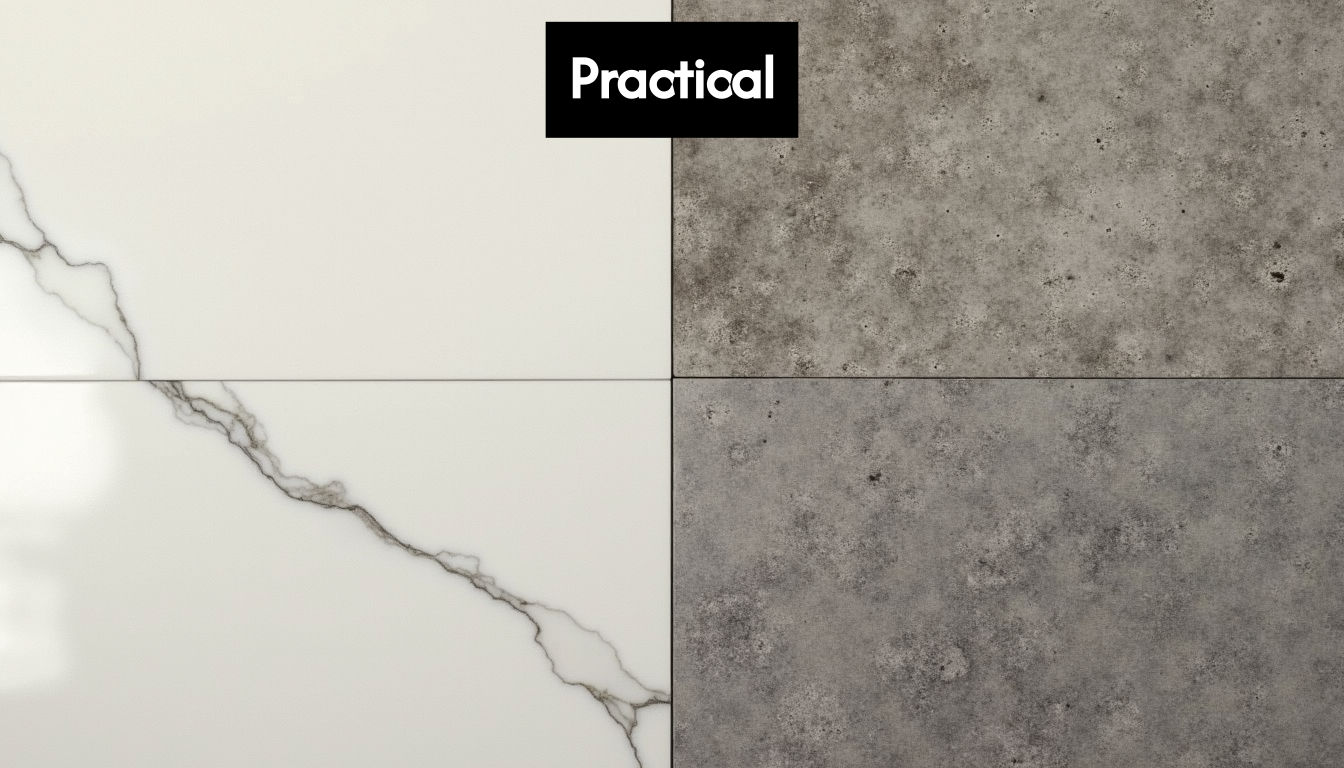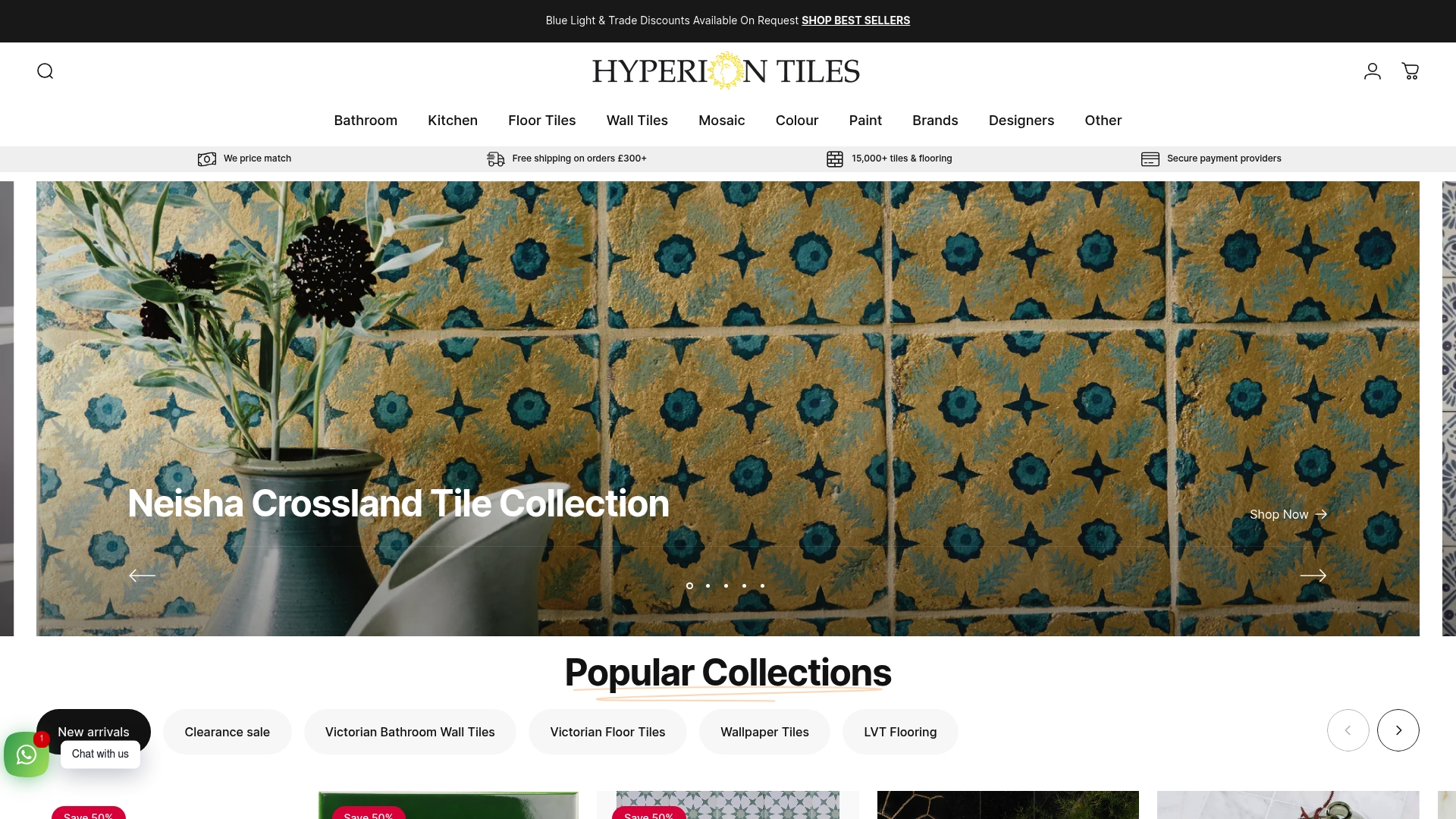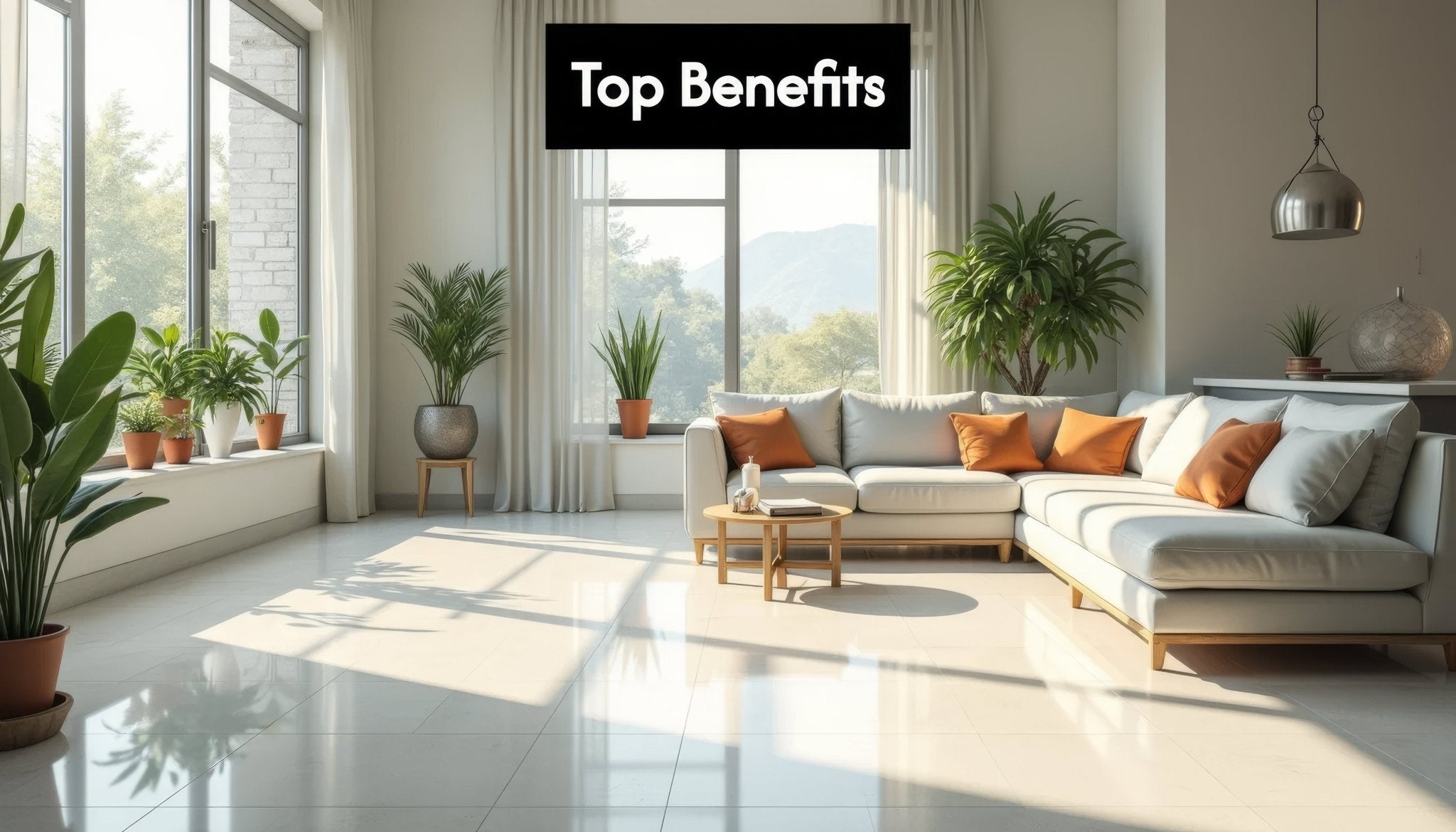 Choosing the right flooring in your home is more significant than you might think. Floor tiles can be a game changer due to their exceptional durability, capable of withstanding high traffic without significant wear and tear. But here’s the kicker: while many people focus solely on design, the most valuable aspect often gets overlooked. The true secret of floor tiles lies in their health benefits. They are hypoallergenic and easy to clean, making them a cornerstone for a healthier living environment. This is just the beginning of what makes tiles an unrivalled choice for your home.
Choosing the right flooring in your home is more significant than you might think. Floor tiles can be a game changer due to their exceptional durability, capable of withstanding high traffic without significant wear and tear. But here’s the kicker: while many people focus solely on design, the most valuable aspect often gets overlooked. The true secret of floor tiles lies in their health benefits. They are hypoallergenic and easy to clean, making them a cornerstone for a healthier living environment. This is just the beginning of what makes tiles an unrivalled choice for your home.
Table of Contents
- Why Choose Floor Tiles?
-
Key Advantages Of Tile Flooring
- Health And Hygiene Benefits
- Energy Efficiency And Thermal Performance
- [Environmental Sustainability](#environmental- sustainability)
- Practical Benefits Of Tiles
- Picking The Right Floor Tiles
Quick Summary
| Takeaway | Explanation |
|---|---|
| Unmatched Durability and Longevity | Floor tiles offer exceptional durability and can withstand high traffic without significant wear and tear, making them a long-term investment for your home. |
| Versatility and Design Flexibility | With a wide range of materials, colours, and patterns available, floor tiles provide extensive design options that can mimic natural materials, enhancing aesthetic appeal without sacrificing performance. |
| Health and Hygiene Benefits | Tile flooring is hypoallergenic and easy to clean, promoting a healthier living environment by preventing allergens and microorganisms from accumulating. |
| Cost-Effectiveness and Long-Term Value | Despite potentially higher initial costs, the longevity and low maintenance of tiles result in reduced replacement and ongoing expenses, making them a financially savvy choice. |
| Safety Considerations in Tile Selection | Ensuring tiles have appropriate slip resistance and texture is crucial for safety, particularly in moisture-prone areas like kitchens and bathrooms. |
Why Choose Floor Tiles?
Choosing the right flooring is a critical decision for homeowners, interior designers, and renovation experts. Floor tiles offer a compelling solution that combines aesthetics, durability, and practical functionality. Understanding the comprehensive benefits of floor tiles can transform how you approach interior design and home improvement.
Unmatched Durability and Longevity
Floor tiles represent an exceptional investment in your property’s infrastructure. Unlike other flooring materials that deteriorate quickly, tiles demonstrate remarkable resilience. According to Building Centre Research, tiles are a lifelong flooring solution when properly maintained, capable of withstanding high traffic areas without significant wear and tear.
Scientific studies have substantiated these claims. Research highlighting tile performance demonstrates coefficients of restitution ranging from 0.55 to 0.86, comparable to dense concrete and terrazzo. This means floor tiles can absorb impact and maintain structural integrity far better than many alternative flooring options.
Versatility and Design Flexibility
One of the most compelling advantages of floor tiles is their extraordinary design versatility. Homeowners and designers can select from an extensive range of materials, colours, patterns, and textures. Whether you prefer the classic elegance of marble, the rustic charm of terracotta, or the modern sleekness of porcelain, floor tiles offer endless customisation possibilities.
Moreover, contemporary tile manufacturing techniques have expanded design horizons. Innovative technologies now allow tiles that mimic natural materials like wood and stone, providing aesthetic flexibility without compromising on performance. This means you can achieve your desired visual style while retaining the practical benefits of tile flooring.
Sustainable and Cost-Effective Solution
Emergent tile technologies are pushing boundaries in sustainability. Advanced research reveals that recycled plastic tiles now offer impressive benefits, including lower production costs and enhanced durability. These tiles meet rigorous international standards, with compression tests demonstrating breaking forces exceeding 1500 N.
From a long-term perspective, floor tiles represent a financially prudent choice. Their exceptional durability means reduced replacement costs, while their low maintenance requirements translate to minimal ongoing expenses. Waterproof characteristics prevent moisture damage, a common issue with alternative flooring materials like wood, further enhancing their economic value.
When considering floor tiles, you’re not just selecting a surface covering – you’re making a strategic investment in your property’s aesthetic appeal, structural integrity, and long-term value. The combination of design flexibility, durability, and sustainability makes floor tiles an outstanding choice for discerning homeowners and design professionals.
Key Advantages of Tile Flooring
Tile flooring transcends mere aesthetic appeal, offering a comprehensive suite of advantages that make it an intelligent choice for modern homes and commercial spaces. Beyond surface-level attractiveness, tiles provide multifaceted benefits that address practical, health, and environmental considerations.

Health and Hygiene Benefits
In an era where indoor air quality and cleanliness are paramount, tile flooring emerges as a superior solution. Extensive research confirms that ceramic tiles are hypoallergenic and produce zero volatile organic compound (VOC) emissions. This characteristic makes them exceptionally beneficial for individuals with respiratory sensitivities, allergies, or asthma.
Tiles’ non-porous surface prevents the accumulation of dust, allergens, and microorganisms, creating a cleaner living environment. Unlike carpets or wooden floors that can harbour microscopic particles, tiles can be easily sanitised, reducing potential health risks. Their smooth surface allows for thorough cleaning, making them an ideal flooring option for households prioritising hygiene.
Energy Efficiency and Thermal Performance
Contrary to common perception, tile flooring contributes significantly to a home’s energy efficiency. Scientific studies reveal that ceramic tiles possess remarkable thermal mass properties, helping regulate indoor temperatures more effectively than many alternative flooring materials.
During winter, tiles can absorb and retain heat from sunlight, gradually releasing warmth into the living space. Conversely, in summer, they remain cool, helping to maintain a comfortable indoor temperature. This natural temperature regulation can lead to reduced energy consumption for heating and cooling, potentially lowering household utility expenses.
Environmental Sustainability
Modern tile manufacturing has embraced sustainable practices, transforming flooring into an environmentally responsible choice. Comprehensive environmental studies demonstrate that natural stone tiles offer substantial ecological advantages compared to alternative floor coverings.
The extended lifespan of high-quality tiles means fewer replacements and reduced material waste. Many contemporary tile manufacturers now incorporate recycled materials and employ energy-efficient production techniques. Natural stone tiles, in particular, represent a sustainable option with minimal environmental impact throughout their lifecycle.
Moreover, the durability of tiles ensures they remain functional and visually appealing for decades, further reducing the environmental footprint associated with frequent floor replacements. By choosing tile flooring, homeowners make a conscientious decision that balances aesthetic preferences with environmental responsibility.
Ultimately, tile flooring represents more than just a surface covering – it’s a strategic investment in health, comfort, and sustainability. The comprehensive advantages of tiles extend far beyond their visual appeal, offering a holistic solution that addresses multiple aspects of modern living.
Practical Benefits of Tiles
Tile flooring is not merely an aesthetic choice but a pragmatic solution for modern living spaces. Beyond their visual appeal, tiles offer an array of practical advantages that address real-world challenges homeowners and designers frequently encounter. Understanding these benefits can transform how you approach interior design and flooring decisions.
Low Maintenance and Durability
Building Centre Research confirms that ceramic tiles are exceptionally durable and require minimal maintenance. Unlike other flooring materials that demand intensive care, tiles can withstand significant wear and tear, particularly in high-traffic areas of homes and commercial spaces.
The non-porous nature of ceramic and porcelain tiles means they resist staining, moisture absorption, and bacterial growth. Simple cleaning routines involving regular sweeping and occasional mopping are typically sufficient to maintain their pristine appearance. This low-maintenance characteristic translates to considerable time and effort savings for homeowners, making tiles an intelligent long-term flooring investment.
Versatility in Application
Tile flooring’s remarkable adaptability sets it apart from other surface materials. From kitchen splashbacks to bathroom floors, from living room expanses to outdoor patios, tiles can be successfully employed across diverse environments. Their resistance to temperature fluctuations, moisture, and physical impact makes them suitable for virtually every domestic and commercial space.
Modern manufacturing techniques have further expanded tile versatility. Advanced printing technologies now allow tiles to convincingly mimic natural materials like hardwood, marble, and stone, providing designers and homeowners unprecedented design flexibility. This means you can achieve your desired aesthetic without compromising on performance or durability.

Cost-Effectiveness and Long-Term Value
EMC Tiles Research highlights the significant economic advantages of tile flooring. While initial installation costs might seem higher compared to some alternatives, tiles offer exceptional long-term value. Their extraordinary durability means reduced replacement expenses, and their minimal maintenance requirements translate to lower ongoing costs.
Furthermore, tiles contribute to energy efficiency by providing excellent thermal regulation. Their inherent thermal mass helps stabilise indoor temperatures, potentially reducing heating and cooling expenses. In essence, tile flooring is not just a surface covering but a strategic investment that delivers financial benefits over time.
Choosing tile flooring represents a sophisticated approach to interior design—one that balances aesthetic preferences with practical considerations. By prioritising performance, durability, and versatility, tiles offer a comprehensive solution that meets the complex demands of modern living spaces.
Picking the Right Floor Tiles
Selecting the perfect floor tiles is a nuanced process that requires careful consideration of multiple factors. Your choice will impact not just aesthetics, but also long-term functionality, safety, and overall home value. Understanding the critical selection criteria can help you make an informed decision that meets both your design aspirations and practical requirements.
Understanding Durability and Performance Metrics
Hyperion Tiles Research emphasises the importance of comprehensive performance metrics when choosing floor tiles. Professional selection goes beyond visual appeal, requiring a detailed assessment of technical specifications that guarantee long-term performance.
For residential applications, experts recommend tiles with a minimum breaking strength of 1300N and a Porcelain Enamel Institute (PEI) rating of 4 or 5 for high-traffic areas. These technical ratings provide a scientifically validated indication of a tile’s ability to withstand daily wear and potential impact. By prioritising these performance indicators, homeowners can ensure their flooring investment remains resilient and attractive for years.
Safety Considerations in Tile Selection
Safety should be a paramount consideration when selecting floor tiles, particularly in areas prone to moisture. UK tile durability experts recommend evaluating tiles using the Pendulum Test Value (PTV), which measures slip resistance. A PTV of 36 or higher is considered essential for spaces like kitchens, bathrooms, and entryways where water exposure is common.
Beyond slip resistance, consider the tile’s surface texture and finish. Glossy tiles might look elegant but can become hazardous when wet, whereas textured or matte finishes provide better traction. Additionally, consider the tile’s coefficient of friction, which indicates its grip performance under different conditions. Selecting tiles with appropriate safety features can significantly reduce the risk of accidents in your home.
Material and Application Matching
Every space in your home has unique requirements, making it crucial to match tile materials with specific application needs. Porcelain tiles, for instance, offer exceptional durability and water resistance, making them ideal for bathrooms and kitchens. Natural stone tiles like marble provide unparalleled elegance but might require more maintenance and have specific installation considerations.
Consider factors such as subfloor composition, room temperature variations, and expected foot traffic when making your selection. Ceramic tiles work brilliantly in moderate-use areas, while high-traffic zones might benefit from more robust porcelain or industrial-grade options. Some tiles offer better thermal properties, which can be advantageous in spaces with underfloor heating systems.
Ultimately, choosing the right floor tiles is about creating a harmonious balance between aesthetic vision, practical performance, and long-term value. By approaching tile selection as a strategic decision—rather than a purely decorative choice—you can transform your living spaces with flooring that is both beautiful and brilliantly functional.
Frequently Asked Questions
What are the main benefits of using floor tiles in my home?
Floor tiles offer several advantages including unmatched durability, versatility in design, health and hygiene benefits, low maintenance requirements, and cost-effectiveness over time.
How do tiles enhance indoor air quality?
Tiles are hypoallergenic and non-porous, meaning they do not trap dust or allergens, making them easier to clean and contributing to a healthier indoor environment.
Are tiles suitable for high-traffic areas?
Yes, floor tiles are highly durable and can withstand heavy foot traffic without showing signs of wear, making them an excellent choice for areas like hallways and living rooms.
How do I choose the right type of tiles for my home?
Consider factors such as durability, slip resistance, aesthetics, and the specific application (e.g., kitchens, bathrooms) when selecting tiles to ensure they meet your needs.
Transform Your Home with Premium Floor Tiles from Hyperion Tiles
Imagine stepping into your beautifully designed home, where every room reflects style, durability, and a commitment to health. The article highlights the exceptional durability and hypoallergenic benefits of floor tiles—key factors that can elevate your living space. But selecting the right tiles shouldn’t be a daunting task. At Hyperion Tiles, we make it easy!

With our extensive catalogue categorised into bathrooms, kitchens, floor tiles, and mosaics, you can find the perfect solutions to suit your specific needs. Plus, our commitment to customer satisfaction includes price matching and free shipping on orders over a certain amount! Don’t wait—explore our curated collections and transform your home today. Visit us at https://hyperiontiles.co.uk and discover how easy it is to achieve a healthier, stylish home with our premium floor tiles!




Share:
Building with Tiles: Your Ultimate Guide (2025)
Key Factors in Tile Selection for Your Home